OCI FortiGate HA Cluster – Reference Architecture: Code Review and Fixes
Introduction OCI Quick Start repositories on GitHub are collections of Terraform scripts and configurations provided by Oracle. These repositories ... Read More
Découvrez pourquoi Eclipsys a été nommée 2023 Best Workplaces in Technology, Great Place to Work® Canada et Canada's Top 100 SME !
En savoir plus !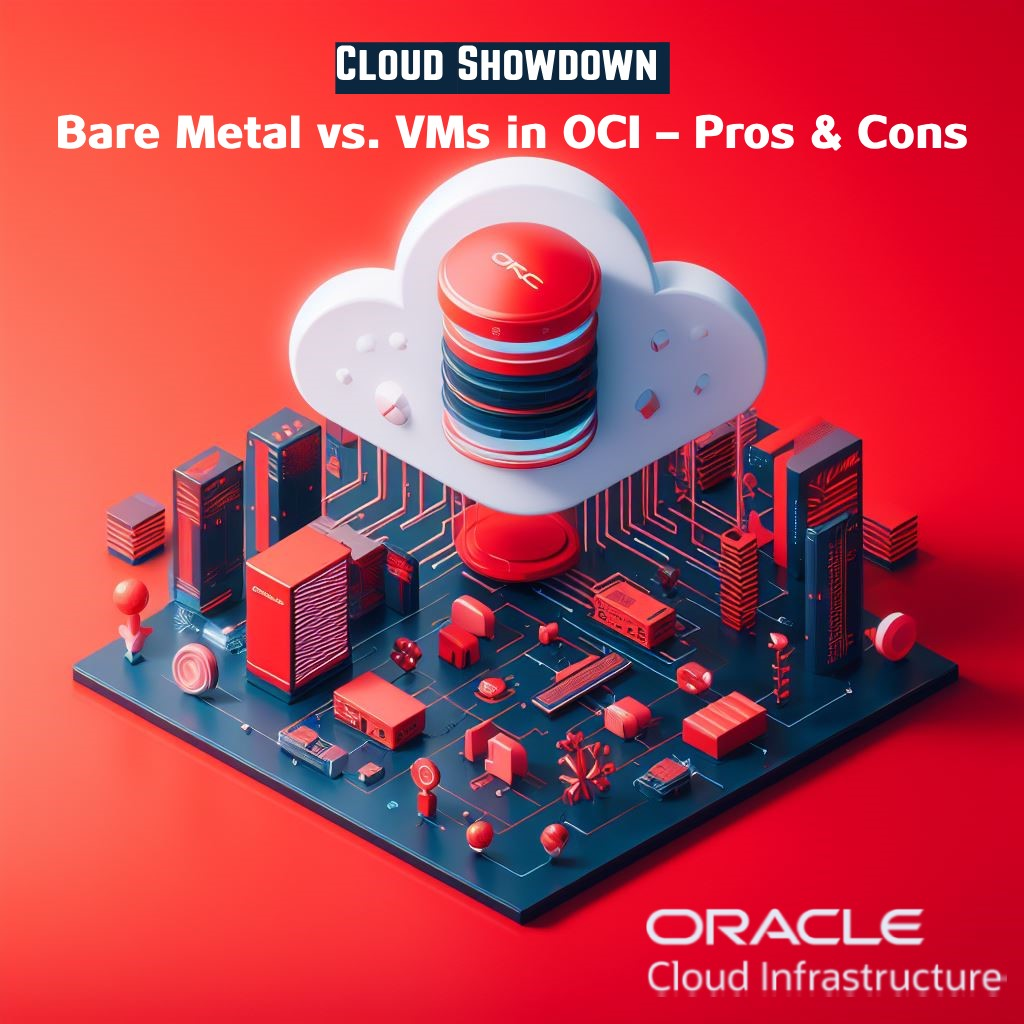
The migration journey to the cloud for a business comes in different shapes and colors. Today, we’ll explore a quick comparison between Bare metal and VM platforms, which are two IaaS computing options available in Oracle Cloud infrastructure. Although specific to OCI, you might find similar benefits and trade-offs in other Cloud platforms.
In this short post, we will revisit what the VM platform has to offer compared to the Bare Metal Option and remind you where the Bare Metal offering still makes sense.
At present, your organization might utilize bare metal servers to support your critical applications. While BM servers offer high performance and dedicated resources, there are several compelling advantages to migrating to VM-based machines within OCI.
Side note: Broadcom just acquired VMware and decided to split it, which brings a lot of uncertainty to its customers and partners. So you might as well consider your options.
Here’s a small list:
With VM-based machines in OCI, you can dynamically scale resources up or down, ensuring optimal performance while maximizing cost-efficiency.
High-scale VM provisioning
No need to wait for a new physical host to deploy more resources as VMs can be created by thousands with a base CPU power of up to 32 cores for intel and 64 for AMD.
Elastic compute shapes
Only in VMs can you access flex shapes (intel/ADM) that allow for a custom number of CPUs and memory size to fit your specific application needs. Example: High memory but low CPU workloads (3CPU | 112GB).
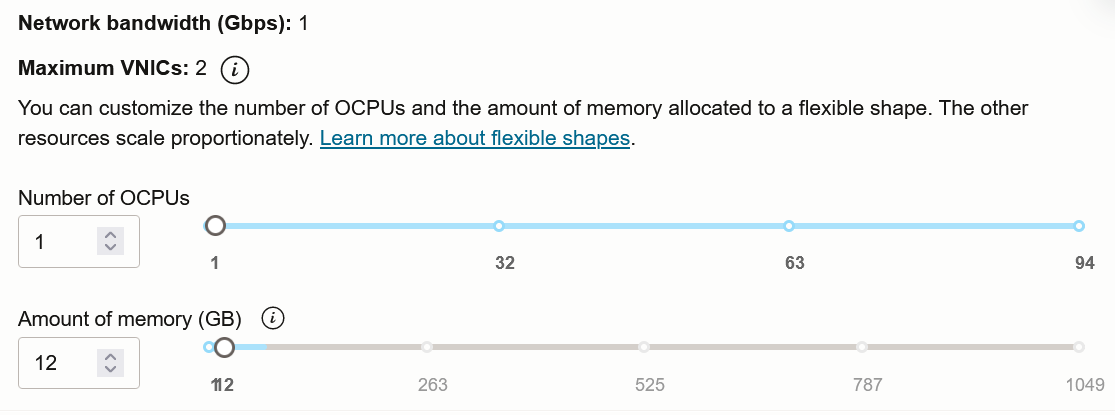
You can change your VM shape without having to rebuild your instances or redeploy your applications.
Extended Memory VMs
In May 2023, OCI launched Extended memory VM instances to provide more memory and CPU cores that exceed the amount a single physical socket carries (see table below).
Supported flex shapes:
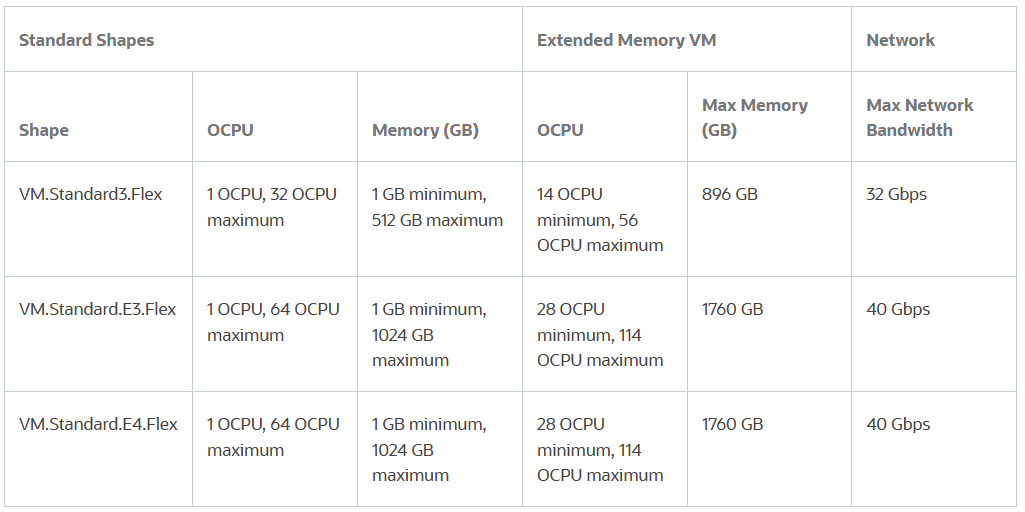
How does that work?
The extended VMs are given cores and memory across multiple physical sockets. However, you should remember to optimize your application layer to be NUMA aware.
Extended AMD flex example
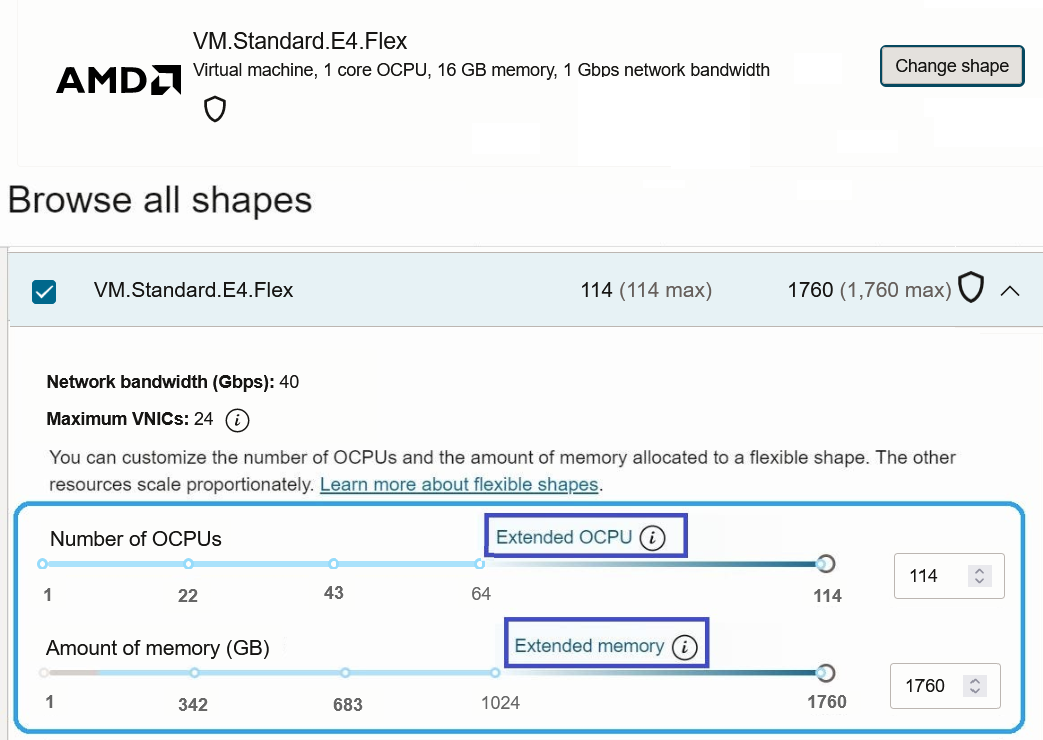
Extended Intel flex example
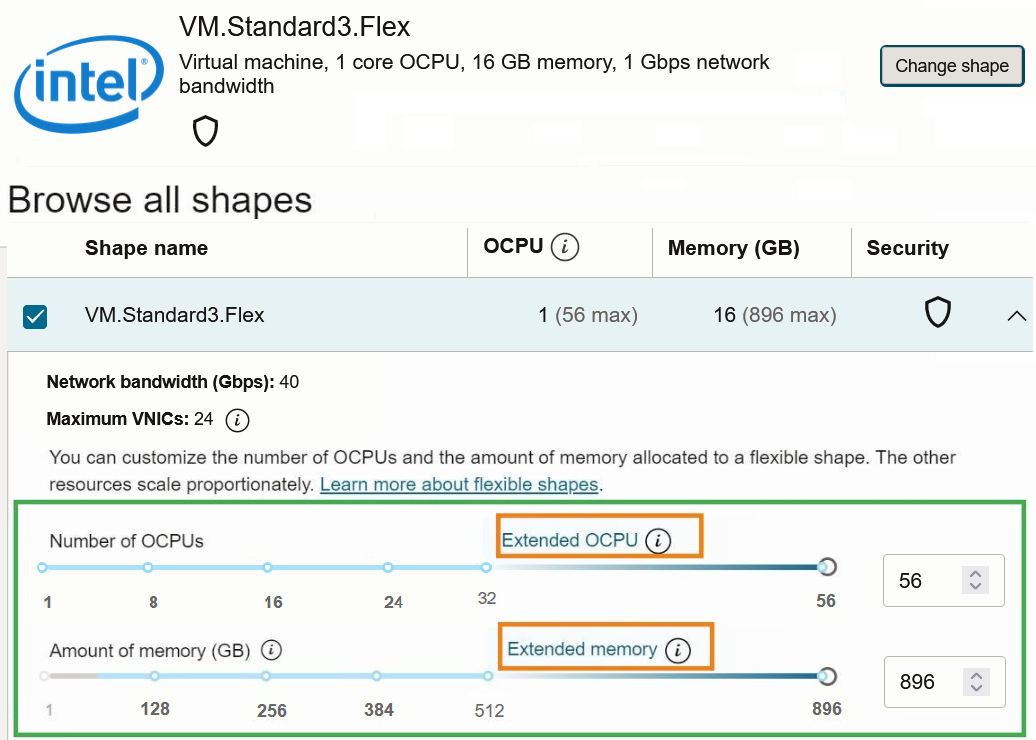
Block volume performance auto-tuning
Enables Block Volume to adjust the volume’s performance between levels you specify, based on the actual monitored performance of a volume like CPU autos calling but for storage. learn more here.
How does that work?
You set the min and max performance based on volume performance units per GB(VPUs/GB)
More VPUs will allocate more resources to a volume, increasing IOPS/GB and throughput/GB
Block Volume adjusts the performance to the minimum level as much as possible
As volume load increases, the performance is scaled up as needed, on a best-effort basis
The metrics used to trigger the tuning are
Volume throttled operations
Volume-guaranteed VPUs/GB, IOPS, and throughput
Scale to 0: The detached volume perf autotuning feature, even enables to adjustment of the performance level to Lower Cost (0 VPUs/GB), When the volume is detached.
Turn off the light service
You can schedule the shutdown of idle servers when not needed (after Hours/weekends..) & stop paying for computing to save up money (not possible in BM hosts that stay up even if underlying VMs are down)
Host and hypervisor overhead
Unlike on BM hosts, the physical and hypervisor layer is taken care of by Oracle Cloud, which will leave a lot more time for your Ops team to focus on the application performance and enable the developers
License Compliance Simplified
Migrating to OCI VM-based machines eliminates the need to pin cores to comply with software license agreements. Oracle provides “Intellectual Property (IP) License Assurance” for VM instances, which means you no longer have to allocate dedicated cores for specific software licenses. This allows you to optimize resource utilization and reduce costs
Bring Your Own License (BYOL)
OCI VM-based machines offer the flexibility to leverage your existing licenses through the BYOL program. You can bring your current licenses for Oracle Database, WebLogic Server, and other Oracle products and enjoy cost savings by deploying them on VM instances in OCI. This way, you can maximize your existing investments and minimize licensing costs
Optimized Network Virtualization
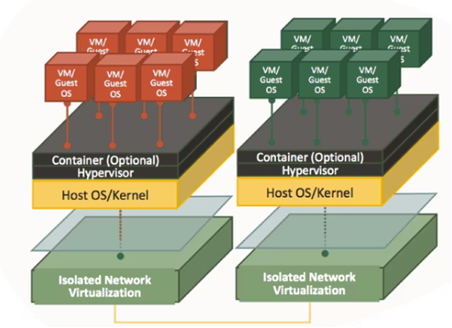
OCI’s VM-based machines leverage a highly optimized KVM layer that takes full advantage of isolated network virtualization. The network virtualization is separated from the host and hypervisor, ensuring enhanced security and isolation for your applications and data. This architecture provides a robust and reliable foundation for your workloads.
Simplified Management and Deployment
OCI’s VM-based machines are fully integrated with Oracle’s suite of management and automation tools. This includes all API-based tooling; OCI Console, OCI CLI, and Terraform via Resource Manager.
These tools simplify provisioning, monitoring, and managing your VM instances, ensuring a seamless migration experience and easing Full-stack DR implementation.
Enhanced Observability:
OCI’s VM-based machines have native integration with comprehensive monitoring/observability tools through the Cloud Observability and Management Platform. This platform streamlines logging and offers specialized metrics and insights for WebLogic Server and Oracle Database
WebLogic Server Monitoring
Native monitoring allows you to track critical metrics of your WebLogic Server instances, such as response times, throughput, JVM memory utilization, and thread pool usage.
You can set up alerts based on thresholds for these metrics to ensure that you are notified when any performance degradation occurs (i.e. response times)
Database
Monitor key database performance metrics, such as CPU usage, memory utilization, I/O latency, and query execution times from the OCI console, and offer proactive alerts and loggings. OEM is also supported for enterprise edition licenses
Native Security Features: not out of the box in Bare metal
OS Management Service
Allows automation of patch management process through scheduled patching for your OCI VMs, which ensures that your VM instances are up to date with the latest OS security patches, reducing the risk of exploitation exposure.
Vulnerability Scanning and Security (VSS):
Provides comprehensive visibility into the security posture of your VM-based instances.
VSS scans your instances regularly to identify and report all Common Vulnerabilities and Exposures (CVEs) not protected on the VMs
Audit Capabilities
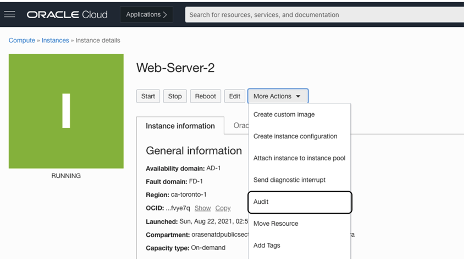
OCI offers built-in audit features that provide comprehensive visibility into the VMs and enable you to track and monitor changes, access, and activities within your environment.
You can generate audit logs that capture critical events, configuration changes, user authentication, and resource provisioning, allowing you to meet compliance requirements, detect unauthorized activities, and enhance the security of your infrastructure.
Dedicated Virtual Machine Host (Mixed solution)
What if your company just can’t certify VMs in a multitenant infrastructure due to regulatory reasons, and must comply with isolation and licensing requirements for entire servers (host-based license)?
Bare metal might be the solution, but you still don’t want the overhead of maintaining the hypervisor layer.
OCI Dedicated VM hosts, answer that very issue by allowing to run VM instances on dedicated servers, which are single tenant and not shared with other customers.
Simplicity: the entire hypervisor layer is managed & supported by OCI (less overhead)
Most OCI VM features supported provisioning, managing VMs via the console, API, CLI
A range of dedicated VM host shapes to choose from like Intel/ADM & flexible ones
Shapes that support flexible hosted VMs billed based on OCPUs & RAM separately
You are still billed for the entire host upon creation like the Bare Metal host
Some OCI compute VM features are not supported:
Autoscaling, Burstable instances, Capacity reservations
Instance shape change, Instance Pools
Reboot & live migrations (use manual migration instead)
No CPU overcommit possible and less control compared to the classic Bare Metal option
There are a few things worth noting regarding BOYL licensing in OCI and in the cloud in general.
Scaling and Partitioning:
BYOL licenses don’t align with dynamic or autoscaling compute model
In BM hosts, BYOL can work for Oracle products but customers have to take care of the Partitioning Policy. See Oracle Partitioning Policy doc and KVM hard partitioning on Oracle Enterprise Linux.
OCI License Manager
To simplify licensing management for both Oracle and 3rd-party software in OCI, Oracle has made a free License Manager service which allows to:
Eliminate overhead for software procurement and licensing
Enabling easy tracking and reporting of license utilization
Proactive monitoring and notifications for licensing needs
Here’s a sample of flexible shapes like E series (AMD) but there’s more in the OCI flex compute shape reference.
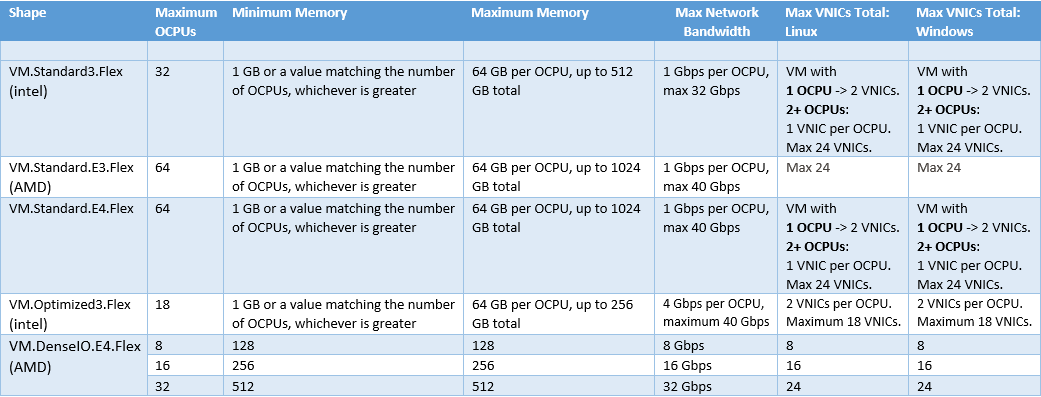
This brief overview captures key aspects/trade-offs of the Virtualized platform vs. the Bare Metal option
While there’s a plethora of capabilities to explore, this blog focuses on the most relevant ones
I strongly believe that besides a few exceptions, VMs are the best IaaS option for you out there
If your organization is heavily dependent on hardware resources, the private cloud is a better place for you
Introduction OCI Quick Start repositories on GitHub are collections of Terraform scripts and configurations provided by Oracle. These repositories ... Read More
Introduction So far, I have used Oracle AutoUpgrade, many times in 3 different OS’. Yet the more you think you’ve seen it all and reached the ... Read More